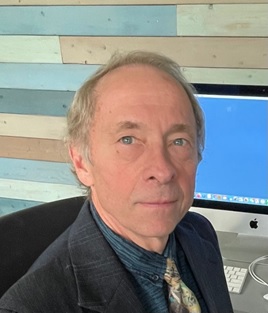
Title: Direct laser marking versus laser bonding technologies.
Speaker
Joe Sarver
Laser R&D Scientist USA
Abstract
Direct laser marking versus laser bonding technologies.
These laser technologies are used extensively in the serialization and decorating industries in coatings, plastics, glass, ceramics and metals.
Biography
Joseph Sarver has a BS in Chemistry from West Liberty University and a MS in Polymer Science from Carnegie Mellon University. He has worked in industry as a chemist & scientist at Bayer, Cerdec, Ciba Specialty Chemical, and Ferro. Twenty five years of his 43 years of experience is in the laser industry with fourteen patents and a patent pending using lasers and infrared reflecting technologies. He has taken products from discovery in the lab to production with a number of commercial products. Currently an Industry Consultant in the areas of organic pigments, inorganic pigments, and compounds for polymers, glass, metals for laser marking and other functional properties.

Title: A Machine-vision based Framework for Geometric Defect Compensation in Laser Additive Manufacturing of Thin-Walled Parts
Keynote Speaker
Prof. Dr. Lida Zhu
School of Mechanical Engineering and Automation, Northeastern University, China
Abstract
A Machine-vision based Framework for Geometric Defect Compensation in Laser Additive Manufacturing of Thin-Walled Parts
Laser Directed energy deposition (L-DED), one of the typical additive manufacturing approaches, enables producing large metallic components; however, geometric defects tend to occur in the forming of thin-walled parts, severely impeding the final accuracy and quality. Focusing on the abnormal height variability of the layers during the forming, we propose a framework to implement the real-time layer height prediction and height consistency compensation. First, the deposited layer contour can be extracted with in-situ imaging. Through interval division for the as-built thin wall under the given coordinate, the flatness rate (η) is introduced to quantify the height consistency of the layer. Next, the mapping relationship between layer height and scanning speed (h-v) is established, and by updating the dataset and iterating the h-v function with the height data of the preceding deposition. And then the next layer's height can be predicted, and the parameter feedback can be achieved to be used for the flatness compensation layer by layer during the subsequent deposition. Finally, the applicability of the proposed method is validated through forming experiments. The proposed framework is able to effectively compensate the height consistency according to the parameter feedback in real time, and the maximum improvement of the η of the thin-walled part was 22.8%. We present a real-time process monitoring and in situ defect repair methodology and aim to inspire more reliable and intelligent laser application in additive manufacturing.
Biography
Lida Zhu has completed PhD and postdoctoral studies from the Northeastern University (NEU), China. During his PhD study, he visited The University of British Columbia as a visiting scholar in 2008. He has been working as a professor of School of Mechanical Engineering and Automation, NEU since 2011. He studied in University of New South Wales as a visiting scholar in 2016. In recent five years, he published more than 60 papers in reputed journals and more than 30 patents. He serves as editor or reviewer for many international journals, like INT J ADV MANUF TECH, J INTELL MANUF, etc.

Title: Colorful Triplet Excitons in Carbon Nanodots for Time Delay Lighting
Speaker
Dr Shi-Yu Song,
Zhengzhou University, China
Abstract
Colorful Triplet Excitons in Carbon Nanodots for Time Delay Lighting
Time delay lighting offers an added period of buffer illumination for human eyes upon switching off the light. Long-lifetime emission from triplet excitons has outstanding potential, but the forbidden transition property due to the Pauli exclusion principle makes them dark, and it stays challenging to develop full-color and bright triplet excitons. Herein, triplet excitons emission from ultraviolet (UV) to near-infrared (NIR) in carbon nanodots (CNDs) is achieved by confining multicolor CNDs emitters in NaCNO crystal. NaCNO crystal can isolate the CNDs, triplet excitons quenching caused by the excited state electrons aggregation induced energy transfer is suppressed, and the confinement crystal can furthermore promote phosphorescence of the CNDs by inhibiting the dissipation of the triplet excitons due to nonradiative transition. The phosphorescence from radiative recombination of triplet excitons in the CNDs covers the spectral region from 300 nm (UV) to 800 nm (NIR), the corresponding lifetimes can reach 15.8, 818.0, 239.7, 168.4, 426.4, and 127.6 ms. Furthermore, the eco-friendly luminescent lampshades are designed based on the multicolor phosphorescent CNDs, and time delay light-emitting diodes are thus demonstrated. The findings will motivate new opportunities for the development of UV to NIR phosphorescent CNDs and time-delay lighting applications.
Biography
Shi-Yu Song obtained his B.S. degree in physics from Zhengzhou University in 2018. Currently, he is a Ph.D. student under the supervision of Dr. Kai-Kai Liu and Prof. Chong-Xin Shan at Zhengzhou University. His research interests mainly focus on the synthesis of luminescent carbon dots and their applications.
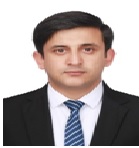
Title: Laser-based white lighting source for simultaneous high-speed visible light communication and high-efficiency solid-state lighting
Speaker
Dr. Amjad Ali Amjad
Peking University China
Abstract
Laser-based white lighting source for simultaneous high-speed visible light communication and high-efficiency solid-state lighting
Abstract:
Gallium nitride (GaN) phosphor-converted white light-emitting diodes (Pc-WLEDs) are emerging as an indispensable solid-state lighting (SSL) source for next-generation display systems and the lighting industry. Together with the function of lighting, visible light communication (VLC) using Pc-WLEDs has gained increasing attention to fulfil the growing demand for wireless data communication. Over the past few years, white-light-emitting diodes have been used for both high-speed visible light communication and solid-state lighting simultaneously. Practically, the low modulation response and low emitting intensity of light-emitting diodes (LED) are the drawbacks to the development of ultrahigh-speed VLC and a high-quality SSL system. Blue GaN laser diode (LD) and color convertor quantum dots-based white light can simultaneously be used for both high-speed VLC and SSL.
Biography
Amjad Ali Amjadreceived the B.S. degree (Hons.) in computer systems engineering from the University of Engineering and Technology (UET), Peshawar, Pakistan, in 2014, the M.S. degree in electrical engineering from the University of Lahore, Islamabad, Pakistan, in 2017 and the PhD degree from Zhejiang University in 2021. Currently, he is a Postdoctoral Research Fellow at the school of electronic and computer engineering, Peking University.His research interests include wireless optical communications, underwater wireless optical communication, solid-state lighting and visible light communication. He has co-authored one book chapter and several papers on the above subjects in refereed journals and conference proceedings.

Title: Efficient Electron acceleration due to novel Hermite Cosh Gaussian Laser beam.
Speaker
Dr. Jyoti Rajput
Lovely Professional University India
Abstract
Efficient electron acceleration due to novel Hermite Cosh Gaussian Laser beam
In this work, we have observed the combined action of an external axial magnetic field and a linear frequency chirp (negative chirp) on electron acceleration via radially polarized (RP) Hermite-Cosh- Gaussian (HChG) laser beam in vacuum. Electron energy gain has been analyzed by varying various laser parameters like intensity parameter. An enhanced electron acceleration is noted when the frequency chirp parameter and magnetic field are optimized. A frequency chirp lengthens the period that an electron and laser pulse interact, extending the duration of the resonance. Important findings are obtained when an axial magnetic field is present and the electron is accelerated with increased energy until the betatron resonance reaches saturation.
Biography
Dr. Jyoti Rajput received her Ph.D. degree from Dr. B.R. Ambedkar NIT Jalandhar, Punjab, India and currently an Associate professor of Physics at Lovely Professional University, Punjab, India with 14 years of teaching experience. Her research focused areas are laser induced electron acceleration in vacuum and plasma, harmonic generation and THz radiation. She has published 34 research articles in various international SCI journals and presented her research work at various international conferences/workshops. She is supervising 6 PhD scholars. She is also a member of different renowned associations/societies e.g., PSSI, ISCA, etc. and acting as a reviewer in many Scopus Indexed Journals in the relevant field.

Title: Quantum Computing hype worldwide
Speaker
Dr. Albert Lehmeyer
Physicist, Headhunter, Quantum Insider, Germany
Abstract
Quantum Computing hype worldwide.
Especially, the Quantum Ecosystem in Europe will be discussed. Following recent studies of BCG and McKinsey, we have to face a distinct Quantum Workforce aspect: the huge gap of Quantum Talents, not only in Europe. Interested candidates, scientists and innovation managers are invited to get more insights regarding Quantum Computing
(Assessing the Needs of the Quantum Industry, Celia Merzbacher and others..2022) Furthermore, I would like to discuss the expected future Quantum roles and the corresponding skill sets with the audience. Just see the following study results: Finally, I would like to get in touch with motivated highly skilled experimental physicists interested in PhD or Postdoc vacancies at the Institut für Quantenoptik in Siegen, Germany,
Dr. Albert Lehmeyer Physicist, Headhunter, Career Consultant, Quantum Insider www.linkedin.com/in/dralbertlehmeyer/ lehmeyer@hahlbrock-cie.de
Biography
Dr. Albert Lehmeyer Physicist, Headhunter, Quantum Insider studied physics with a focus on solid state physics and materials science in Münster and Munich. During his PhD phase, numerous scientific publications in the field of magneto-optics were published, which are still cited today. He then gained multi-layered management experience as a technical project manager (Bayer AG), product manager (medical technology), sales manager (metrology) and as founding managing director of a training institute. Since 2008, he was initially successful as a marketing and technology consultant before discovering his passion for all facets of systemic HR consulting. Candidates and clients appreciate the solution-oriented dialog with Dr. Lehmeyer, which is always focused on eye level, appreciation, trust, added value and sustainability. In the course of the direct approach of specialists and executives, he can draw on hand-picked networks in the D-A-CH region as well as in the Netherlands, Italy, France, Poland, UK and the USA, if required. His industry expertise includes: High Tech Companies (MINT, STEM) Quantum Computing, High Performance Computing (HPC)
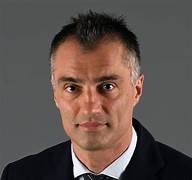
Title: Water vapor therapy an innovative treatment for BPH: physical principles and surgical technique.
Speaker
Dr. Giampaolo Siena
Careggi University Hospital, Italy
Abstract
Water vapor therapy an innovative treatment for BPH: physical principles and surgical technique.
Minimally invasive surgical techniques (MISTs) have become newly adopted in urological care for the management of symptoms due to Benign Prostatic Hyperplasia (BPH). Among MISTs Rezūm treatment (RT) has emerged with excellent patient outcomes, including improving quality of life (QoL) and International Prostate Symptom Scores (IPSSs), while also preserving sexual function. The Rezum system uses radiofrequency power to create thermal energy in the form of water vapour, which in turn deposits the stored thermal energy when the steam phase shifts to the liquid phase upon cell contact. The steam disperses through the tissue interstices and releases stored thermal energy onto prostatic tissue effecting cell necrosis. The procedure can be performed in an office-based setting. Usually, one to three injections are needed for each lateral lobe and one to two injections may be delivered into the median lobe (depending on the prostate size). Safety profile is favourable with adverse events documented to be mild-to-moderate and resolving rapidly..
Biography
Giampaolo Siena has completed his PhD on Robotic Kidney Transplant, from the Department of Urology, University of Florence, Italy. He is qualified as associate professor of Urology since 2018. He is author of more than 3000 urological major surgical procedures and author and co-author of about 100 scientific papers published in international peer-review magazines. He is presently working as consultant of Urology at Careggi University Hospital.
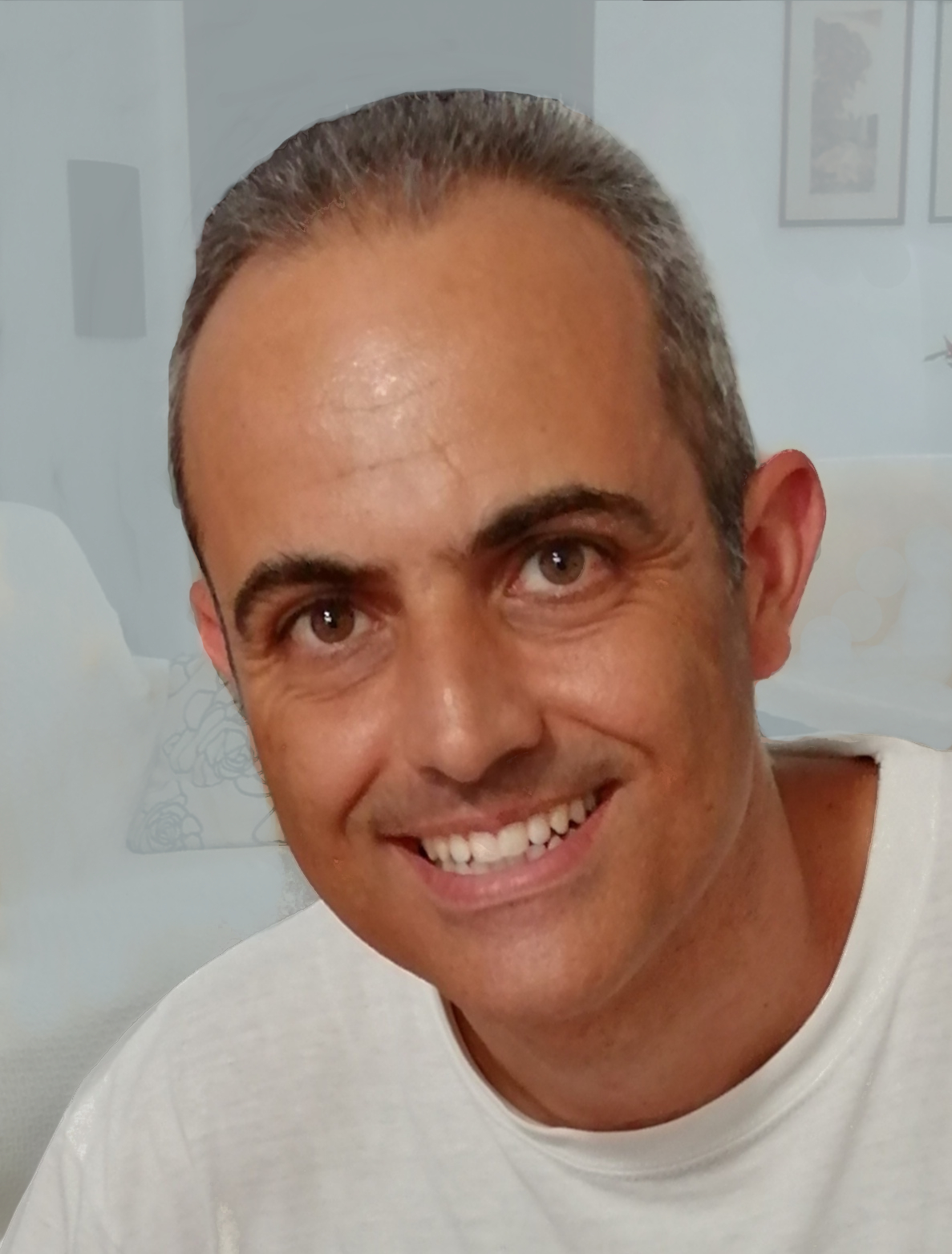
Title: Reversible environmental modulation of the emission properties of lead halide perovskite nanocrystals
Keynote Speaker
Prof. Dr. Marco Anni
University of Salento Italy
Abstract
Reversible environmental modulation of the emission properties of lead halide perovskite nanocrystals
Lead halide perovskites are receiving huge attention due to their capability to combine easy deposition and processing with excellent optical and electrical properties, allowing their potential applications to solar cells, LEDs, photodetectors and lasers. However these materials typicall show poor environmental stability, with irreversible degradation when exposed to light, heat, and air environment. Rather interestingly, recent studies evidenced that reversible effects of the interaction with the atmosphere are possible, resulting in modulation of the electrical conductivity or of the photoluminescence intensity, thus opening the way to possible application to electrical or optical gas sensors. In this work we report on a detailed investigation of the environmental effects on the spontaneous emission properties of fully inorganic CsPbBr3 nanocrystals thin films, with nanocrystals synthesized by hot-injection and co-precipitation methods. The NCs realized by co-precipitation show a clear PL intensity increase in air, with respect to vacuum, due to revesible defect passivation, that modifies both the number of emitting nanocrystals (static effect) and the exciton non-radiative relaxation pathways (dynamic effects). On the contrary, in nanocrystals realized by hot-injection the lower surface defects density results in a reverible PL quenching in air, ascribed to moisture induced solvation of the nanocrystals surface. We also report, for the first time, the evidence of reversible modulation of the Amplified Spontaneous Emission (ASE) intensity, showing a reversible quenching in air about 6.5 times stronger than the spontaneous emission one, This last results evidence the stronger environmental sensitivity of ASE, and could be useful for future perovskite applications to optical gas sensors.
Biography
Marco Anni is an Associate Professor of Experimental Physics at the University of Salento (Italy). Since 2006 he has been Director of the Photonic Laboratory of the Mathematics and Physics Department. He graduated in Physics in 1998 and completed his PhD in physics in 2001, both at the University of Salento. His main research expertise is in the field of optical spectroscopy of semiconductors, mainly conjugated molecules and lead halide perovskites, with particular attention to light amplification and lasing processes.
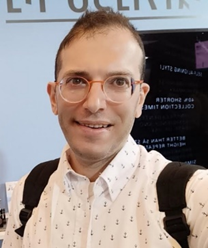
Title: Quantum Chiplets: Micro Optics Integration Issues
Speaker
Dr. Dror Malka
Holon Inst. of Technology - HIT, Israe
Abstract
Efficient Polarization Intensity Combining with Silicon Slot-Waveguide MMI Configuration
In response to the escalating demands for high-speed data transmission with reduced energy consumption and environmental impact, this study presents the design of a compact transverse electric (TE)/transverse magnetic (TM) polarization multimode interference (MMI) combiner utilizing silicon slot-waveguide technology. Achieving a delicate balance between high-speed performance and energy efficiency is crucial in modern optical communication systems.The proposed MMI coupler, designed for 1550 nm wavelength, exhibits a significant discrepancy in light coupling for TM and TE polarizations. Through precise control of the light propagation mechanism within the MMI coupler, a lower order of mode is achieved, leading to a more compact device. The polarization combiner is rigorously analyzed using the full-vectorial beam propagation method (FV-BPM) and Matlab codes to optimize key geometrical parameters.
Results demonstrate that, within a short light propagation distance of 16.15 μm, the device functions effectively as both a TM and TE polarization combiner, boasting an impressive extinction ratio of 13.1 dB for TM mode and 10.94 dB for TE mode. The insertion losses are notably low at 0.56 dB (TM) and 0.76 dB (TE), and the combiner operates efficiently across the C-band spectrum. Moreover, the polarization combiner exhibits robust tolerance to MMI coupler length variations, with a tolerance of 450 nm. These characteristics position the proposed device as a promising candidate for integration into photonic integrated circuits, particularly in enhancing power efficiency within transmitter systems.
Biography
Dr. Dror Malka received his BSc and MSc degrees in electrical engineering from the Holon Institute of Technology (HIT) in 2008 and 2010, respectively, Israel. He has also completed a BSc degree in Applied Mathematics at HIT in 2008 and received his Ph.D. degree in electrical engineering from Bar-Ilan University (BIU) in 2015, Israel. Currently, he is a Senior Lecturer in the Faculty of Engineering at HiT. His major fields of research are nanophotonics, super-resolution, AI silicon photonics and fiber optics. He has published around 50 refereed journal papers, and 50 conference proceedings papers.
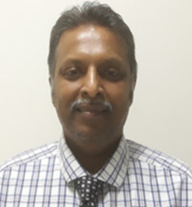
Title:
Plenary Speaker
Dr. Yuvaraja Visagathilagar
Principal Engineer at QinetiQ Australia
Abstract
Biography
Dr Yuvaraja Visagathilagar, PhD (Australia), BEng(1stc Hons., Australia), FIEAust, SMIEEE, CPEng, NER RPEV RPEQ, APEC Engineer, IntPE(Aus), IEA, PRINCE2, MOSA, LM-MTT, MEDS, MSPIE, MAOS, MANZOS, MAIP, MBCS has over 27+ years of extensive expertise and experience in academia, research, and industry. He graduated with Bachelor of Engineering in Communication Engineering and Doctorate in Engineering (with a highly prestigious scholarship from the Australian Government) in 1996 and 2003 respectively from RMIT University, Melbourne Australia. His dissertation was in “Narrow-band Optical Modulator on Lithium Niobate” for telecommunication applications, but it can be applied for other transceivers applications. In research and industry, he has contributed to over 40+ peer-reviewed international journals and conference pubications. He has visited and presented at universities in USA (i.e. UCLA and UCSD), Peregrine Semiconductor Corporation and in Japan (i.e. Science and technology Organisation).He has collaborated with Defence Science Technology Organisation (now DSTG) in Australia where he has contributed in the design, fabrication, packaging and testing of “High-Speed Lithium Niobate Optical Modulator” including documentation of processes for quality certification (ISO 9001) and flip-chip packaging of narrow-band optical modulators on Lithium Niobate and Ceramic materials. He has extensive academic teaching as a lecturer and post-doctorate research fellow in Photonics, FibreOptics & System, RF System, and Integration where he was involved in research of novel design of narrowband optical modulators. In early years, his research was in Narrow-band Lithium Niobate Modulators but also in finding a solution for packaging of optoelectronic devices (i.e. ceramic and Silicon materials). During the collaboration, he worked with sub-contractors in system integration and packaging of the modulator devices in hermetically sealed packages for defence applications. In 2006, he joined “Future Fibre Technologies Ltd” who are the global leading organisation in optical sensing technologies and has extensive experience over 9 years in optical sensing. He was a senior manager and held positions as Senior Fibre Systems Engineer, R&D Team Leader and Applications Engineering Manager where he contributed in the company products enhancements and novel products design. He has contributed to 2 patent solutions for novel systems in optical fibre sensing and contributed to over 110+ reports with fellow colleagues and R&D teams (not published due to commercial-in-confidence). From July 2016 to March 2018, he was a Senior Academic at RMIT University for postgraduate and undergraduate courses in Electrical Engineering Analysis using Matlab, Electronic Engineering, Radar technologies, Communication systems, Optical/Photonic Engineering, Microwave Circuits & System and Advanced Mathematics for various program levels (or years). He contributed to the development teaching materials of a core course in Optical Fibre Systems and Networks for Bachelor and Master’s Program including supervising for over 10+ projects in undergraduate and postgraduate students with a minor thesis. Since April 2018 to June 2020, he is a Senior Academic with the Department of Electrical and Electronics Technology & Engineering, Applied Engineering College (AEC), Riyadh, Kingdom of Saudi Arabia which is affiliated with Lincoln College International and University of Hull, UK with accreditation of Colleges of Excellence by the Government of Kingdom of Saudi Arabia where he is undertaking teaching in Electrical and Electronics technologies & principles for various Bachelor level program. He has been a senior supervisor for over 30+ projects and a minor thesis. In July 2020, he is a researcher undertaking photonics research into reservoir computing and senior academic in lecturing a topic in Optical Fibre Communication Systems, Digital Electronics projects using Altium to design & built a Digital Oscilloscope and Microwave/RF Systems with ©Cadence and Electronic Engineering at the University of Melbourne (Australia) and in January 2021, he joined RMIT University as a researcher and senior academic undertaking research in optical fibre systems and transmission with high-level multi-disciplinary engineering team. Since January 2022, he joined QinetiQ Australia as a Principal Engineer (Senior RF/EMI/EMC Systems Engineer) as a Design and Advisory role providing his expertise & experience in defence and government projects with key interest in Microwave/RF/Radar Communication Engineering, coherent detection optical sensing for pipelines, undersea exploration, seismic detection and temperature sensing, high-speed and narrow-band optical modulators. Early 2023, he was awarded Fellow of Institute of Engineers Australia (FIEAust), the highest recognition and award for his many long years of professional engineering work spanning 27+ years to Australian and global community with extensive experience and expertise in his key area of work as a Communication & Electronics Engineer in academia, industry including research and social activities where he was been a mentor to interns, graduates but he is a Chairperson on various Engineering societies, chapters and editorial boards. This recognition is only awarded to individuals by Invitation Only for their outstanding professional engineering work with key engineering contribution. He received other recognitions amd accreditation & certified with the Engineers Australia (EA) Chartered Professional Engineering (CPEng) and in the National Engineers Register (NER), APEC Engineer, IEA & IntPE(Aus)/ At present he is providing teaching to High School students and supporting undergraduate & postgraduate engineering students with his own educational business (Educational Luminance, www.EducationalLuminance.com) He has a distinguished professional engineering career, he is an active Senior Member of the IEEE for over 28+ years’ service where he is the Chair of the Victorian IEEE Electron Devices & Photonics Society Joint Chapter and representative in the Section Committee, Australia from 2017 He is a active member of IEEE where he is a key volunteer for the Senior Member Elevation reference in Victoria, Australia (or globally), Member of OSA, SPIE, AP-MTT, AIP, AOS, BCS and certified in PRINCE2® & system engineering. He is in various editorial boards for peer-reviewed international journals and key reviewer for many international scientific journals and conferences. He has presented at various international and local conferences as Plenary, Keynote, Invited and has been asked to provide a welcome talk at conference. Other interests include and on-going, provides professional engineering consultancy to organisations locally and globally but passionate about teaching high school students from year 7 – VCE & other states in all Mathematic, Physics, System Engineering and Technology.
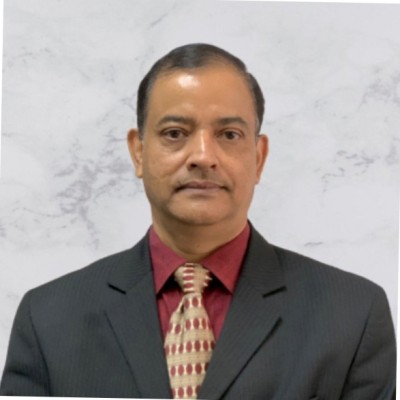
Title: Antibacterial Potency of Pulse Laser Engineered Plasmonic Silver-Copper- Nanoshells
Keynote Speaker
Prof. Sib Krishna Ghoshal
University of Technology Malaysia, Malaysia
Abstract
Antibacterial Potency of Pulse Laser Engineered Plasmonic Silver-Copper
Diverse biocompatible nanomaterials with tailored physiochemical properties became ever-
demanding. As opposed to their bulk structures, a range of important attributes of tiny
nanostructures (size below 100 nm) including safety, stability, toxicity, biocompatibility, eco-
friendliness, fluorescence, cost-effectiveness, chemical inertness, bioactivity, durability, stability
etc. make them beneficial for varied uses. We have demonstrated that strong LSPR and
matchless physicochemical characteristics of the synthesized Ag-Cu nanoshells (ACNSs) can be
favorable for the pharmaceutical drugs formulation and biomolecular vectorization. The
morphology (size and shape) and chemical structures of these NSs were shown to affect
significantly their stability, reactivity, biocompatibility, optical and electronic performance.
Consequently, these emerging traits are valuable for drugs delivery and treatment of different
human disease. Nevertheless, several shortcomings concerning the conventional approaches of
ACNSs preparation with customized physicochemical properties like the need of excess
chemical precursors (toxic, hazardous and costly), extended reaction period, high energy outlay,
and complex processing conditions must be overcome. In this view, we produced some new
types of crystalline and spherical ACNSs with strong fluorescence and LSPR absorption by
nanosecond pulse laser ablation in liquid method wherein the laser fluence were tuned to
engineer their structure, morphology, and fluorescence features. The NSs produced at optimal
laser fluence displayed very narrow particle size distribution and high fluorescence quantum
yield. Furthermore, the quantum size effects-enabled exciton-like energy states and unique
morphology-induced electronic transitions in these NSs were asserted to be effective for many
biomedicinal applications, especially in the improved fluorescence-based therapies, bio-markers
and drugs design.
Biography
Sib Krishna Ghoshal (Condensed Matter Physicist) is Professor at Physics Department and Laser Center, Faculty of Science, Universiti Teknologi Malaysia. He received PhD from JNU (Delhi) and was postdoctoral fellow at Brandeis University (USA) and IIT (Delhi) & Oxford University (UK). He published over 650 research articles, 18 book chapters and 7 books with Google Scholar h-index of 46, i10-index of 152 and citations of 7372. He received 58 research grants, two patents on the proposed anticancer drug formulation and plasmon humidity sensor, supervised 28 PhD, 80 MSc & 60 Undergraduate theses. He is recognized as Top 2% of Scientists in their Field Worldwide in 2019 and 2021 by Stanford University (USA) ranking
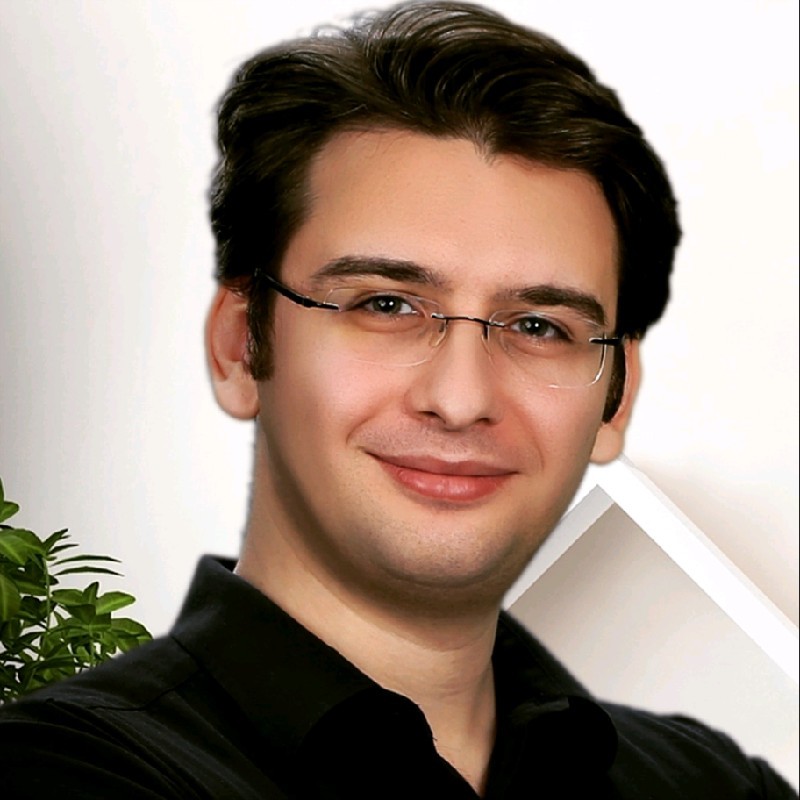
Title: Optimization of methane gas optical sensor based on MachZehnder interferometer
Speaker
Pouriya Poursafargholi
Tabriz University, Iran
Abstract
Optimization of methane gas optical sensor based on MachZehnder interferometer
A natural gas sensor is used to detect different percentages of methane gas. Ring resonators, photonic crystals, and Mach-Zehnder sensors are all examples of methane gas sensors. This study focuses on Mach-Zehnder-based sensors due to their simplicity of construction. This type of sensor, which consists of a unique structure, has been designed and examined previously by researchers, and several techniques have been attempted in its design, but there is room for further optimization. The Mach-Zehnder-based sensor is designed in this paper with a fully redesigned structure. A sensor buildable in a developing country is presented based on the material design of several layers and the structure of the layers composing the Mach-Zehnder arm. This sensor is capable of detecting methane gas concentrations ranging from 0% to 2%. The work is divided into two sections: time-dependent and time-independent. For simulating the structure mentioned above, optical engineering techniques such as the Finite Element Method (FEM) are applied.
Biography
Pouriya Poursafargholi graduated from Tabriz University with a grade of A and worked on biosensors. recently started working on nonlinear optics. also, he is an honored member of the ISO optic and photonic committee

Title: Computational Modeling of Optogenetic Control of Neurons and Human Cardiomyocytes
Speaker
Prof. Sukhdev Roy
Dayalbagh Educational Institute, India
Abstract
Computational Modeling of Optogenetic Control of Neurons and Human Cardiomyocytes
Optogenetics has made a strong impact in neuroscience by providing unprecedented spatiotemporal resolution in reading and writing neural codes with relatively lower invasiveness. It also enables all-optical control and recording of cellular activity in living tissue and opens up exciting prospects for optical neural prostheses. Recently, the first successful human trial of optogenetic retinal prostheses and promising results in cardiac optogenetics have been demonstrated. Computational modelling of optogenetic systems has made significant contributions in developing a better understanding of the photocurrent dynamics in opsin molecules and the change in membrane potential in opsin-expressing cells in response to light. Computational models help in quick virtual testing of newly developed light-sensitive proteins in different cell types within realistic tissue and organ-level settings. The talk would focus on our recent research in computational optogenetics for low-power, high-fidelity and high-frequency excitation, inhibition and bidirectional control of different neurons in the brain and cardiomyocytes in the heart, with newly discovered light-sensitive proteins and opsin pairs. The study not only provides a better understanding of the mechanism to efficiently control different cells but also allows optimization of their response. Desensitization of photocurrent is a fundamental problem while using faster opsins. Under sustained illumination, the photocurrent in fast opsins desensitizes with time and results in spike failure below a certain threshold. Recently, we have shown that co-expressing step function opsins with fast channelrhodopsins can overcome this challenge. It has also been shown that ultra-low power deep sustained optogenetic excitation or suppression of electrical activity in human cardiomyocytes can be achieved with the newly discovered ChRmine opsin. The future prospects of optogenetics will also be discussed.
Biography
Professor Sukhdev Roy received the PhD. degree from IIT Delhi in 1993 and subsequently joined the Dayalbagh Educational Institute, India, where he is at present the Head of the Department of Physics and Computer Science. He has been a Visiting Professor at many universities that include, Harvard, Waterloo, Würzburg, Regensburg, Osaka, City University and Queen Mary University of London, TIFR, Mumbai and IISc. Bangalore. He has won a number of awards and has published 175 research papers and 11 book chapters. He was the Guest Editor of the March 2011 Special Issue of IET Circuits, Devices and Systems Journal (UK) on Optical Computing. He is an Associate Editor of IEEE Access and a Fellow of SPIE, the Indian National Academy of Engineering, the National Academy of Sciences, India, IETE (India), and the Optical Society of India and is listed in the Stanford’s Study of the Top 2% in World Ranking of Scientists in Optoelectronics and Photonics, 2023.
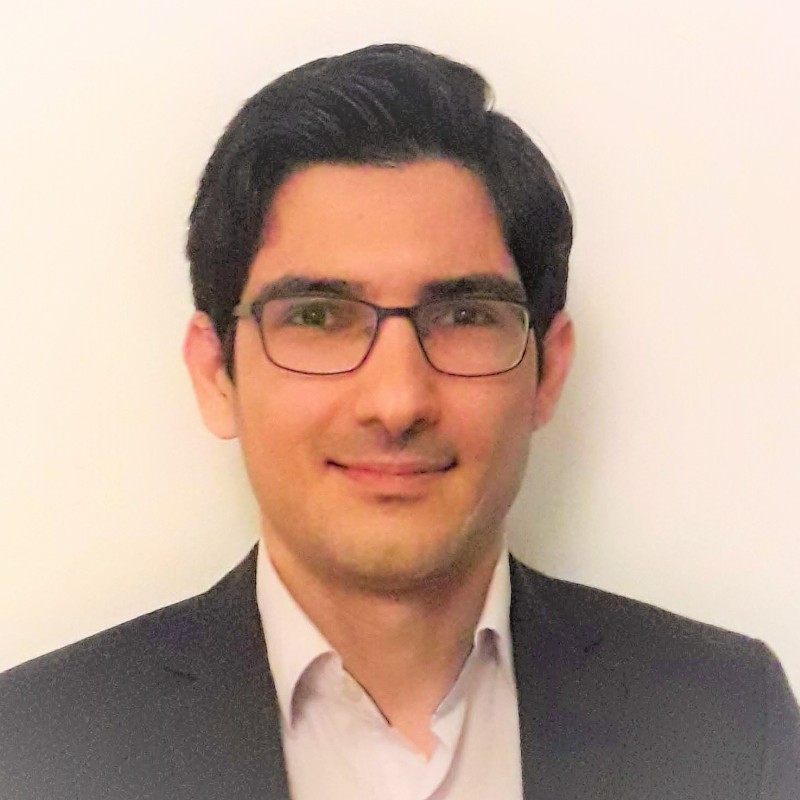
Title: Uniting Distant Atoms: Exploring Shared Radiant Modes in Nanophotonic Waveguides
Keynote Speaker
Hamidreza Siampour
Queen's University Belfast UK
Abstract
Uniting Distant Atoms: Exploring Shared Radiant Modes in Nanophotonic Waveguides
In this abstract, we highlight recent advancements in the field of nanophotonic waveguides for quantum optical devices and their potential for quantum communication and sensing.
In the first part, I discuss the development of integrated quantum photonic circuits based on dielectric-loaded plasmonic waveguides with accurately positioned nanodiamonds containing single vacancy centers [1-4]. By combining resonant and plasmonic enhancement, we significantly increase the spontaneous emission rate of single photons.
Moving on to the second part, I present a chiral nanophotonic waveguide platform with embedded quantum dots that enables both Purcell-enhanced emission and strong chiral coupling. We observe record-high Purcell factors for quantum dots emitting in the slow-light spectral region, and demonstrate chiral routing of spin-carrying photons with exceptional Purcell factors [5].
These advancements, combining plasmonic and photonic crystal waveguide modes, enable strong bonding through radiation coupling in a shared mode. They pave the way for nanoscale functional quantum devices and scalable quantum optical networks.
Biography
I am currently a Lecturer at Queen's University Belfast, where my research primarily focuses on the interplay between nanophotonics and quantum optics. Prior to this role, I served as a Research Associate at the University of Cambridge, where I worked on developing a quantum simulation platform using interacting spins in diamond. Before that, I was a Postdoc at the University of Sheffield, contributing to the development of a semiconductor nanophotonic platform for directional spin-photon coupling. I earned my PhD in Nano-optics from the University of Southern Denmark, with my thesis titled 'A Nanophotonic Platform for Quantum Optical Integrated Circuits

Title: Quantum Chiplets: Micro Optics Integration Issues
Keynote Speaker
Dr. Douglas Sparks
President of M2N Technologies LLC, USA
Abstract
Quantum Chiplets: Micro Optics Integration Issues
Quantum computing and quantum sensing has received a lot of attention lately with the potential to increase computing powers and sensing capabilities by orders of magnitude over what conventional sensors, semiconductor computer processors and memory chips can provide. Since quantum sensing and computing could revolutionize both computing and sensing, increasing memory density and dramatically boosting artificial intelligence, governments and corporations have been pouring billions into the field. This talk will focus on MEMS-based vapor cell technology and the wafer level and post wafer fabrication packaging issues encountered with these optical quantum devices. Materials, vacuum packaging, ion and neutral atom vapor generation, coating, lasers and optical sensor integration will be discussed. Hermeticity issues assoicated with many wafer bonding methods used to create chip-scal vapor cells will be covered. Thin film getter integration, problems with helium ingress and other chip scale packaging steps and issues associated with quantum chiplets will be part of this online discussion.
Biography
Dr Douglas Sparks is the President of M2N Technologies LLC, a consulting firm specializing in semiconductors, MEMS and sensors, including their supply chains. He is currently also assisting InchFab, a new American MEMS foundry located in Sunnyvale, California. Dr. Sparks has international business experience in these fields in the US, China, Japan and Europe in medical, industrial, aerospace, semiconductors, consumer and automotive applications. He has worked at large MEMS IDMs, start-ups and MEMS foundries. Doug was the CTO of Hanking Electronics which built the first 200mm pure MEMS wafer fab in China. He founded a microsensor vacuum packaging company called NanoGetters, which was acquired by Materion. He was the EVP at Integrated Sensing Systems where he launched multiple microfluidic sensor products, including an FDA approved MEMS drug infusion device and industrial products acquired by Endress + Hauser. Doug worked in automotive sensors and semiconductor fabs with Delphi and General Motors. Dr. Sparks holds a PhD in materials engineering from Purdue University and has published more than 170 technical papers and has 73 issued patents.
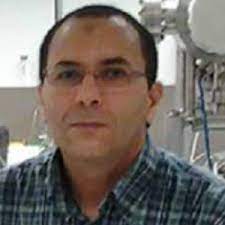
Title: Chemical Bonds of ZnO Rocksalt and Wurtzite types Under Extended Pressure and Temperature; a Molecular Dynamics prediction
Speaker
Dr. Yahia Chergui
Electrical & Electronics Engineering Institute, Boumerdes ,Algeria
Abstract
Chemical Bonds of ZnO Rocksalt and Wurtzite types Under Extended Pressure and Temperature; a Molecular Dynamics prediction
Zinc Oxide is still an important substance in macroscale and nanoscale due to the huge properties under different pressures and temperatures, because of its chemical bonds are between covalent and ionic. In this work we are analyzed the behaviour of zinc oxide rocksalt and wurtzite behavior under the range of pressure 0-100GPa and the range of temperature 300-3000K. We are investigated Molecular Dynamics and DL_POLY on Raven Supercomputer of Cardiff Universityin UK to compare between these bonds under previous conditions. We are used 9a x 9b x 9c as a dimension of our simulation box; we used 5832 atoms of rocksalt and 2916 atoms of wurtzite. Our results are in the vicinity of available data; this information is very important in many industrial fields.
Biography
Yahia CHERGUI is an assistant Professor in Electrical & Electronics Engineering Institute, Boumerdes Algeria. He has completed his PhD from Badji Mokhtar University in Annaba, Algeria. He did all his PhD work in Cardiff University in UK. His research field is Physics(condensed matter, and soft matter simulation by molecular dynamics). He has many published articles and international conferences. He has been serving as a referee with condensed matter journal (IOP), Energy journal (Elsevier), and American Journal of Modern Physics.

Title: Title: Wireless optical communication system model
Speaker
Prof. Dr. KE Xizheng,
Xi'an University of Technology, China
Abstract
Biography
Xizheng Ke, Ph.D., Second-level Professor, deputy director of Shaanxi Provincial Key Laboratory of Intelligent Cooperative Network Military-civilian Joint Construction. Famous Teaching Teacher of Shaanxi Province, Fellow of Chinese Institute of Electronics, Foreign academician of Russian Academy of Natural Sciences, Director of Chinese Optical Engineering Society, Standing Director of Shaanxi Optical Society.
“ Will be updated soon...”
+91 9491 456 452
Door No.200, Immidhihalli Main Road, Whitefield-560066, Bangalore, India
About Us
Global Scientific Guild organizes conferences and webinars to promote quality research and real world impact in an atmosphere of true international co-operation between scientists, doctors, professors, practitioners, engineers and industry by bringing together the world class renowned personalities to discuss the latest developments and innovations at one common platform.